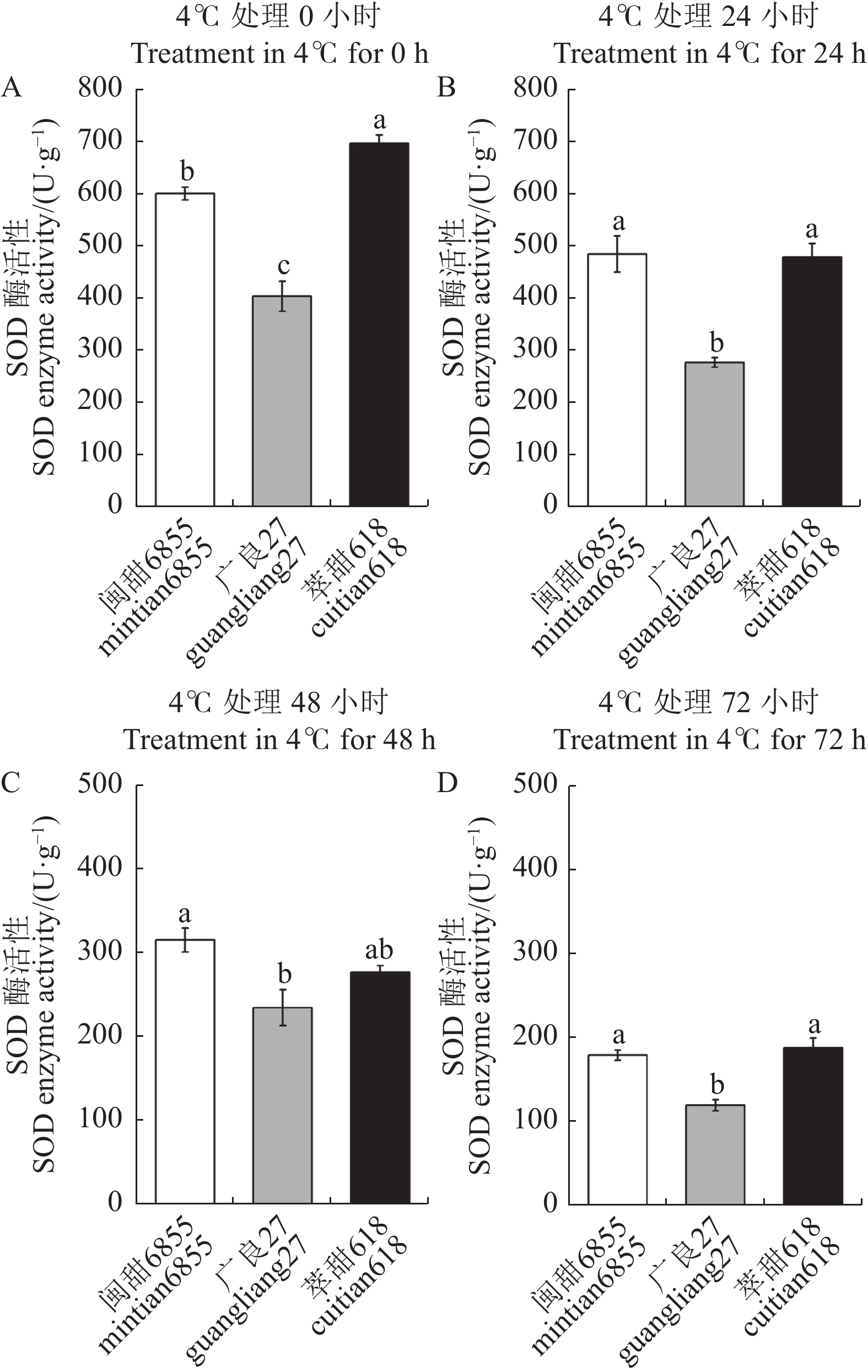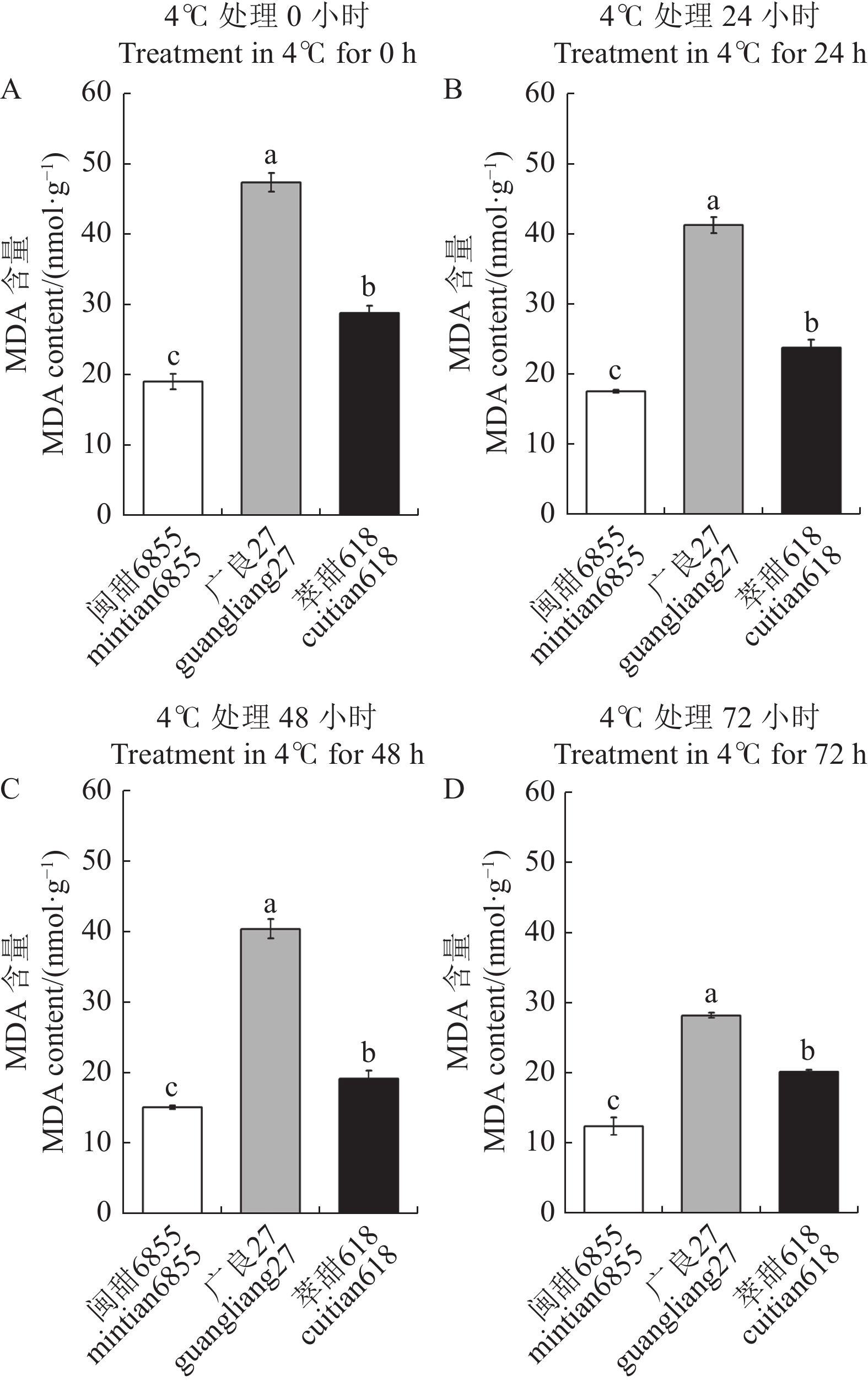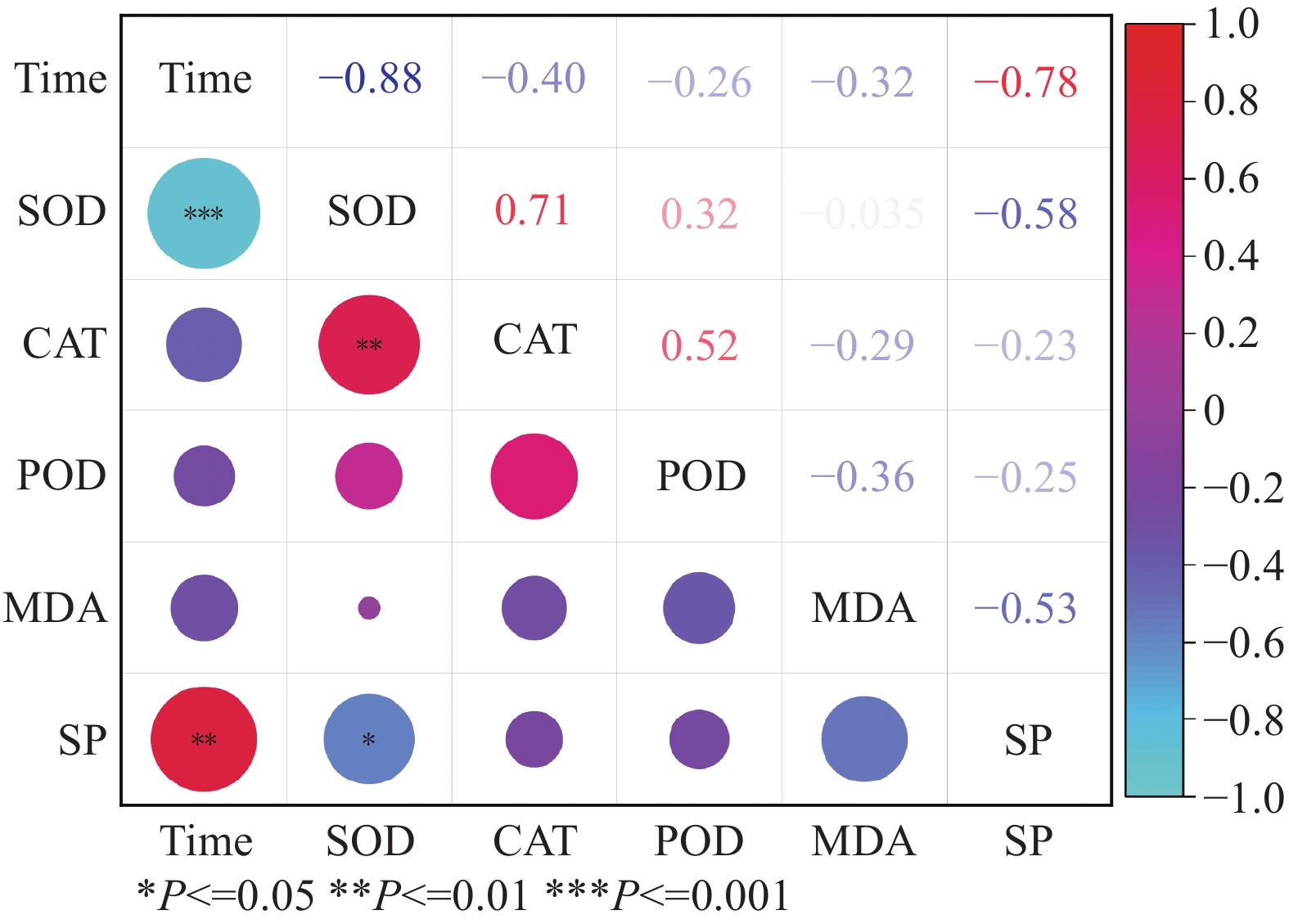|
[1]
|
ALLEN D J, ORT D R. Impacts of chilling temperatures on photosynthesis in warm-climate plants [J]. Trends in Plant Science, 2001, 6(1): 36−42. doi: 10.1016/S1360-1385(00)01808-2
|
|
[2]
|
刘夫国, 牛丽影, 李大婧, 等. 鲜食玉米加工利用研究进展 [J]. 食品科学, 2012, 33(23):375−379.LIU F G, NIU L Y, LI D J, et al. Research progress in processing and utilization of fresh corn [J]. Food Science, 2012, 33(23): 375−379. (in Chinese)
|
|
[3]
|
RAY D K, GERBER J S, MACDONALD G K, et al. Climate variation explains a third of global crop yield variability [J]. Nature Communications, 2015, 6: 5989. doi: 10.1038/ncomms6989
|
|
[4]
|
李春艳, 毛笈华, 于永涛, 等. 甜玉米自交系萌芽期耐寒性的鉴定及筛选 [J]. 广东农业科学, 2016, 43(8):22−26,2.LI C Y, MAO J H, YU Y T, et al. Identification and screening of chilling tolerance of sweet corn inbred lines in seedling emergence stage [J]. Guangdong Agricultural Sciences, 2016, 43(8): 22−26,2. (in Chinese)
|
|
[5]
|
ZENG R, LI Z Y, SHI Y T, et al. Natural variation in a type-a response regulator confers maize chilling tolerance [J]. Nature Communications, 2021, 12: 4713. doi: 10.1038/s41467-021-25001-y
|
|
[6]
|
TANG X D, AN B Y, CAO D M, et al. Improving photosynthetic capacity, alleviating photosynthetic inhibition and oxidative stress under low temperature stress with exogenous hydrogen sulfide in blueberry seedlings [J]. Frontiers in Plant Science, 2020, 11: 108. doi: 10.3389/fpls.2020.00108
|
|
[7]
|
MA Y, TAN R X, ZHAO J R. Chilling tolerance in maize: Insights into advances-toward physio-biochemical responses' and QTL/genes' identification [J]. Plants, 2022, 11(16): 2082. doi: 10.3390/plants11162082
|
|
[8]
|
GUAN Y L, HWARARI D, KORBOE H M, et al. Low temperature stress-induced perception and molecular signaling pathways in plants [J]. Environmental and Experimental Botany, 2023, 207: 105190. doi: 10.1016/j.envexpbot.2022.105190
|
|
[9]
|
马延华, 王庆祥, 陈绍江. 玉米耐寒性生理生化机理与分子遗传研究进展 [J]. 玉米科学, 2013, 21(3):76−81.MA Y H, WANG Q X, CHEN S J. Research progress on physio-biochemistry and molecular genetics of chilling tolerance in maize [J]. Journal of Maize Sciences, 2013, 21(3): 76−81. (in Chinese)
|
|
[10]
|
AHMAD I. Effect of seed priming with ascorbic acid, salicylic acid and hydrogen peroxide on emergence, vigor and antioxidant activities of maize [J]. AFRICAN JOURNAL OF BIOTECHNOLOGY, 2012, 11(5): 1127−1137.
|
|
[11]
|
王瑞. 春玉米苗期抗冷性鉴定及其生理生化基础研究[D]. 哈尔滨: 东北农业大学, 2007WANG R. Studies on cold resistance identification and its physiological and biochemical basis in spring maize seedling[D]. Harbin: Northeast Agricultural University, 2007. (in Chinese)
|
|
[12]
|
王腾飞, 裴玉贺, 郭新梅, 等. 3个玉米品种苗期耐寒性鉴定 [J]. 核农学报, 2017, 31(4):803−808.WANG T F, PEI Y H, GUO X M, et al. Identification of the cold tolerance of three maize varieties in the seedling stage [J]. Journal of Nuclear Agricultural Sciences, 2017, 31(4): 803−808. (in Chinese)
|
|
[13]
|
张海艳. 低温对鲜食玉米种子萌发及幼苗生长的影响 [J]. 植物生理学报, 2013, 49(4):347−350.ZHANG H Y. Effects of low temperature on seed germination and seedling growth of fresh corn [J]. Plant Physiology Journal, 2013, 49(4): 347−350. (in Chinese)
|
|
[14]
|
王芳, 王淇, 赵曦阳. 低温胁迫下植物的表型及生理响应机制研究进展 [J]. 分子植物育种, 2019, 17(15):5144−5153.WANG F, WANG Q, ZHAO X Y. Research progress of phenotype and physiological response mechanism of plants under low temperature stress [J]. Molecular Plant Breeding, 2019, 17(15): 5144−5153. (in Chinese)
|
|
[15]
|
王成, 李月明, 郝楠, 等. 玉米自交系发芽期至苗期耐冷性鉴定 [J]. 种子, 2019, 38(12):6−12.WANG C, LI Y M, HAO N, et al. Identification of Cold Tolerance of Maize Inbred lines from Germination to Seedling Stage [J]. Seed, 2019, 38(12): 6−12. (in Chinese)
|
|
[16]
|
DARVIZHEH H, ZAHEDI M, ABBASZADEH B, et al. Changes in some antioxidant enzymes and physiological indices of purple coneflower (Echinacea purpurea L. ) in response to water deficit and foliar application of salicylic acid and spermine under field condition [J]. Scientia Horticulturae, 2019, 247: 390−399. doi: 10.1016/j.scienta.2018.12.037
|
|
[17]
|
BUERGER P, ALVAREZ-ROA C, COPPIN C W, et al. Heat-evolved microalgal symbionts increase coral bleaching tolerance [J]. Science Advances, 2020, 6(20): eaba2498. doi: 10.1126/sciadv.aba2498
|
|
[18]
|
SATO Y, MASUTA Y, SAITO K, et al. Enhanced chilling tolerance at the booting stage in rice by transgenic overexpression of the ascorbate peroxidase gene, OsAPXa [J]. Plant Cell Reports, 2011, 30(3): 399−406. doi: 10.1007/s00299-010-0985-7
|
|
[19]
|
张巽, 郝建平, 王璞, 等. 灌浆期低温对离体培养玉米强弱势粒发育的影响 [J]. 中国农业科学, 2018, 51(12):2263−2273.ZHANG X, HAO J P, WANG P, et al. Effects of low temperature on maize superior and inferior kernels development during grain filling in vitro [J]. Scientia Agricultura Sinica, 2018, 51(12): 2263−2273. (in Chinese)
|
|
[20]
|
YI Q, ÁLVAREZ-IGLESIAS L, MALVAR R A, et al. A worldwide maize panel revealed new genetic variation for cold tolerance [J]. Theoretical and Applied Genetics, 2021, 134(4): 1083−1094. doi: 10.1007/s00122-020-03753-3
|
|
[21]
|
ZHAO J, LI K W, WANG R, et al. Yield data provide new insight into the dynamic evaluation of maize’s climate suitability: A case study in Jilin Province, China [J]. Atmosphere, 2019, 10(6): 305. doi: 10.3390/atmos10060305
|
|
[22]
|
SINGH S, KUMAR V, KAPOOR D, et al. Revealing on hydrogen sulfide and nitric oxide signals co-ordination for plant growth under stress conditions [J]. Physiologia Plantarum, 2020, 168(2): 301−317. doi: 10.1111/ppl.13002
|
|
[23]
|
KIDOKORO S, SHINOZAKI K, YAMAGUCHI-SHINOZAKI K. Transcriptional regulatory network of plant cold-stress responses [J]. Trends in Plant Science, 2022, 27(9): 922−935. doi: 10.1016/j.tplants.2022.01.008
|
|
[24]
|
杨德光, 马月, 蒋芳芳, 等. CaCl2对低温胁迫及恢复后玉米自交系种子萌发及幼苗生理特性的影响 [J]. 华北农学报, 2017, 32(S1):147−152. doi: 10.7668/hbnxb.2017.S1.026YANG D G, MA Y, JIANG F F, et al. Effects of CaCl2 on seed germination and seedling physiological characteristics of maize inbred lines after low temperature stress and recovery [J]. Acta Agriculturae Boreali-Sinica, 2017, 32(S1): 147−152. (in Chinese) doi: 10.7668/hbnxb.2017.S1.026
|
|
[25]
|
杨小环, 赵维峰, 孙娜娜, 等. 外源水杨酸缓解低温胁迫对玉米种子萌发和早期幼苗生长伤害的生理机制 [J]. 核农学报, 2017, 31(9):1811−1817. doi: 10.11869/j.issn.100-8551.2017.09.1811YANG X H, ZHAO W F, SUN N N, et al. Physiological mechanisms of exogenous salicylic acid-mediated low temperature tolerance in seed germination and early seedling growth of maize [J]. Journal of Nuclear Agricultural Sciences, 2017, 31(9): 1811−1817. (in Chinese) doi: 10.11869/j.issn.100-8551.2017.09.1811
|
|
[26]
|
张建国, 王振华, 曹靖生, 等. 不同来源国内外玉米自交系耐低温评价利用研究 [J]. 玉米科学, 2019, 27(6):7−12.ZHANG J G, WANG Z H, CAO J S, et al. Evaluation and utilization of low temperature tolerance of maize inbred lines from different sources [J]. Journal of Maize Sciences, 2019, 27(6): 7−12. (in Chinese)
|
|
[27]
|
胡宇, 梁烜赫, 赵鑫, 等. 低温冷凉区覆膜玉米子粒灌浆速率和产量特征分析 [J]. 玉米科学, 2019, 27(5):95−100.HU Y, LIANG X H, ZHAO X, et al. Analysis of grain filling rate and yield characteristics of film-covered maize in cold climate areas [J]. Journal of Maize Sciences, 2019, 27(5): 95−100. (in Chinese)
|
|
[28]
|
龚金龙, 张洪程, 胡雅杰, 等. 灌浆结实期温度对水稻产量和品质形成的影响 [J]. 生态学杂志, 2013, 32(2):482−491.GONG J L, ZHANG H C, HU Y J, et al. Effects of air temperature during rice grain-filling period on the formation of rice grain yield and its quality [J]. Chinese Journal of Ecology, 2013, 32(2): 482−491. (in Chinese)
|








 下载:
下载:








